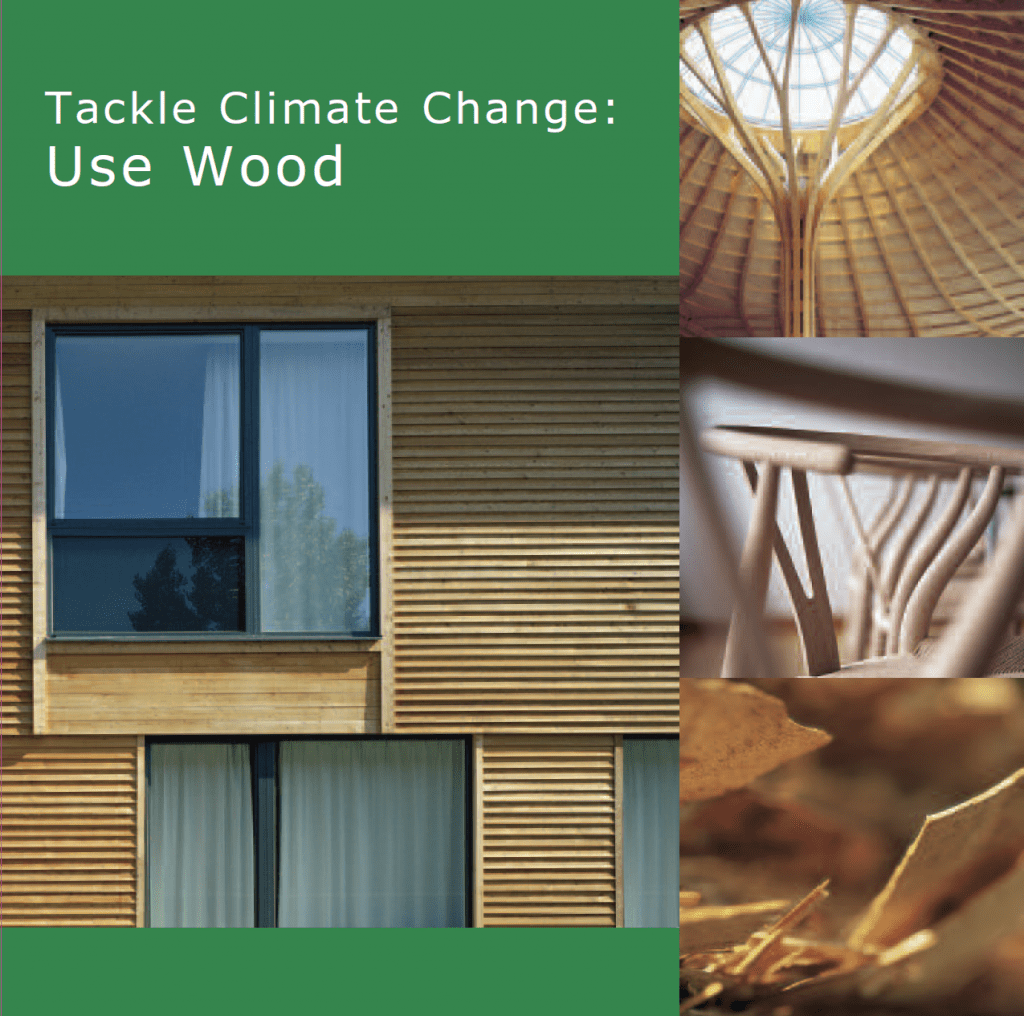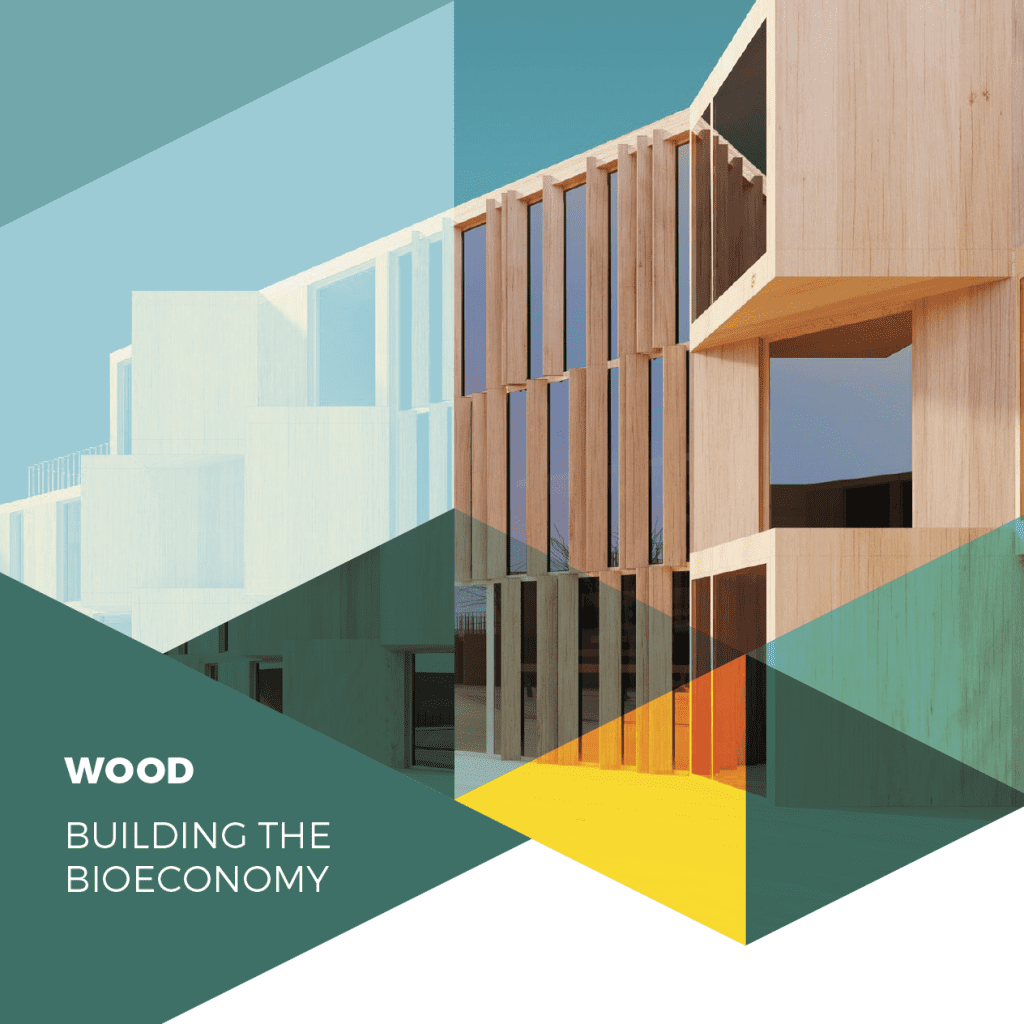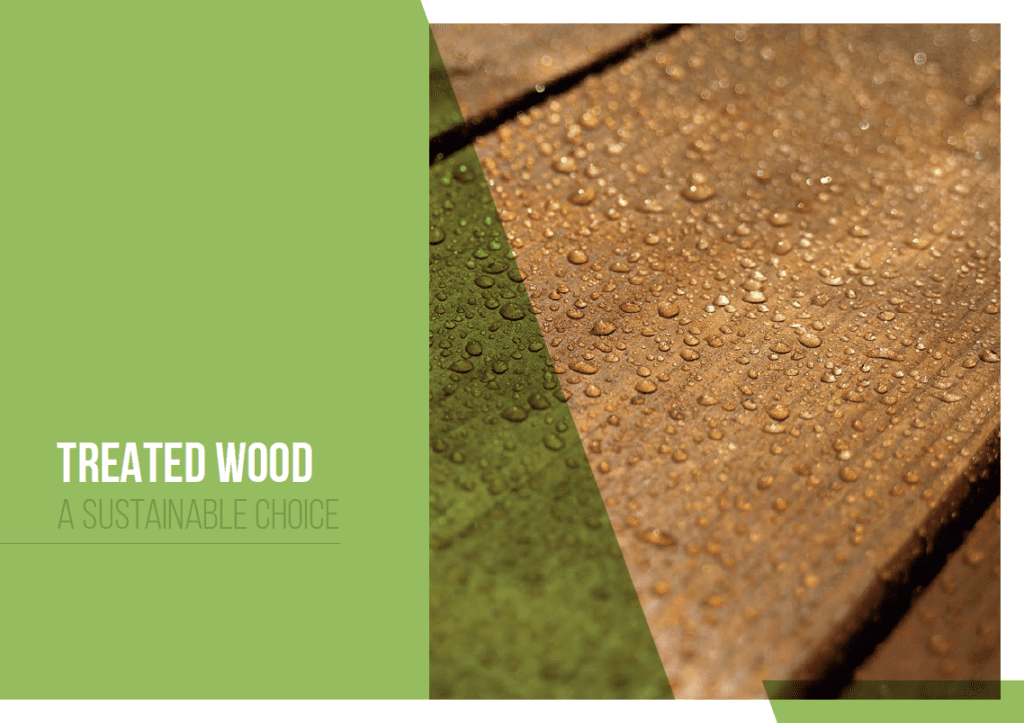


A construction material, provided and renewable by Nature, with predictable performance, taking carbon from the atmosphere and locking it away for decades, with low energy demand and a feel good aesthetic, appreciated by almost everyone – that’s treated wood.
Wood is part of the bioeconomy, can be sourced responsibly, is a flexible and adaptable material that can be used efficiently and aligns with the concept of a circular economy. At the end of its life wood can be reused in a cascading process of uses, recycling or recovery of energy. Wood is consequently a truly renewable construction material.


Wood offers a simple way to reduce the CO2 emissions that are understood to be the main cause of climate change through:
- the carbon sink effect of the forests;
- the carbon storage effect of wood products;
- substitution for carbon-intensive materials.
Not only is the production and processing of wood highly energy- efficient, giving wood products an ultra-low carbon footprint, but wood can often be used to substitute for materials like steel, aluminium, concrete or plastics, which require large amounts of energy to produce.
Every cubic metre of wood used as a substitute for other building materials reduces CO2 emissions to the atmosphere by an average of 1.1 tonnes (t). If this is added to the 0.9 t of CO2 stored in wood, each cubic metre of wood saves a total of 2.0 t CO2. Based on these figures, a 10% increase in the percentage of houses in Europe whose main structural components are wood, produces sufficient CO2 savings to account for about 25% of the reductions prescribed by the Kyoto Protocol 1.
Wood Protection
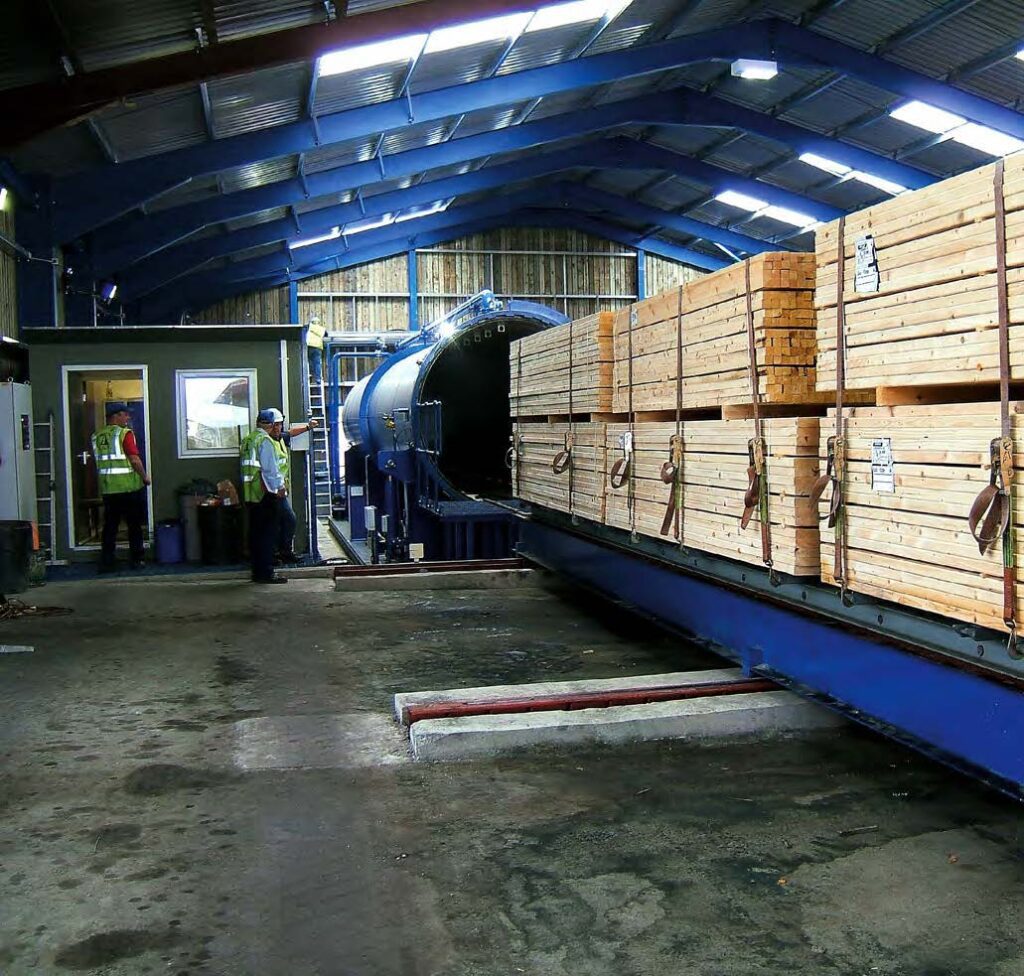

Apart from a very few, mostly tropical species, untreated wood is vulnerable to biodeterioration by fungi and insects. These agencies also degrade the sustainability credentials of untreated wood leading to early failure in service, premature release of carbon and economic loss more characteristic of a linear economy than a desirable circular economy.
Commercially important wood species are typically derived from well-managed forests delivering high growth rate material. The natural durability of wood is limited to the heartwood and depends on the species, growth conditions and provenance. Modern sawmill practices designed to maximise sawn wood production yield, driven by high demand, mean that it is impractical and uneconomic to exclude sapwood.


The sapwood of all species is vulnerable to insect and fungal attack so requires protection against insect attack and, when wood becomes and remains wet, fungal attack. Even where it is to be used, heartwood may also require protection depending on the wood species, the conditions of use and the service life required.
Recognising the short life of untreated wood for use in, for example, mines, ships, bridges, building and fencing and the inconvenience and cost of failure, humankind has from antiquity attempted to prolong the life of wood. The discovery of the biological causes of wood damage and decay, coinciding with the start of the Industrial Revolution, led to the search for effective treatments that has culminated in the treatments and processes available now for many uses of treated wood that meet the strict health, safety and environmental protection requirements of today’s regulatory regime.
Sustainability
Sustainability is most often defined as meeting the needs of the present without compromising the ability of future generations to meet theirs 2.
For true sustainability, we need to integrate the goals of a high quality of life, health and prosperity with social justice and maintaining the earth’s capacity to support life in all its diversity.


These social, econmic and environmental goals are interdependent and mutually reinforcing and are recognised widely as the three aspects of sustainability: economic, environmental and social.
Only through balancing social, environmental and economic aspects can we achieve true sustainability. Both treated wood and the biocides used in wood protection conform to the principles of sustainability and for clarity these are addressed separately.
Sustainable use of biocides


Products containing biocides, such as wood preservatives, are a family of products intended to destroy or control harmful or unwanted organisms (such as fungi and insects) that have detrimental effects on the environment, on animals, on humans, their activities or the products they use or produce. Biocidal products are used in a wide variety of ways by both industrial and professional users as well as by the public.
Sustainable use can be defined for biocidal products as the objective of reducing the risks and impacts of the use of biocidal products on human health, animal health and the environment.
Treated Wood – A Sustainable Choice shows how economic, environmental and social aspects of use of biocides in wood protection deliver sustainability.
Wood preservatives were among the first biocidal products to be subject to regulation and standardisation in respect of these characteristics and consequently are now accepted as both safe and effective.
Treated wood as a sustainable material


Treated wood is the material of choice in every situation where its characteristics make it suitable. With such protection, designers have the choice of the foremost renewable and sustainable material.
When structures come to the end of their life, treated wood may be segregated for cascading and recycling to extend the useful life of the material. Even when disposal eventually becomes the only option, energy generation by burning returns carbon to the atmosphere where it is turned back into wood by trees using the energy of sunlight. As the amount of CO2 emitted from combustion is no more than the amount previously stored, burning wood is carbon neutral – a truly circular economy.
Treated Wood – A Sustainable Choice
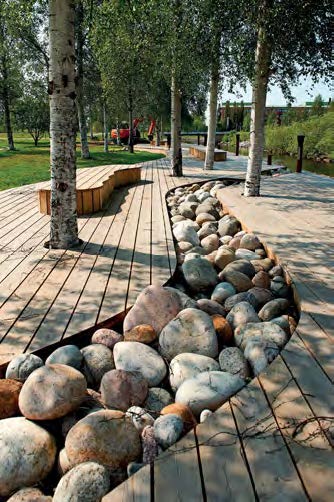

The full brochure uses four typical use-scenarios to demonstrate the sustainability characteristics of treated wood – wood for construction, railway sleepers, poles for electricity and telecommunications and landscaping and decking. It also sets out the Circular Economy credentials of treated wood and highlights the importance of best practice and education of designers, specifiers, installers and users and how the treated wood industry leads in developing guidance and programmes to assist these groups in optimising sustainable use of treated wood.
- International Institute for Environment and Development, Using Wood Products to Mitigate Climate Change, 2004 ↩︎
- BS ISO 20400:2017 Sustainable procurement – Guidance ↩︎
Executive summary TREATED WOOD A sustainable choice
Only through balancing social, environmental and economic aspects can we achieve true sustainability. Both treated wood and the biocides used in wood protection conform to the principles of sustainability and for clarity these are addressed separately.
TREATED WOOD A sustainable choice
This document has been produced by a joint task group representing the European Wood Preservative Manufacturers Group (EWPM) and the European Institute for Wood Preservation (WEI).
